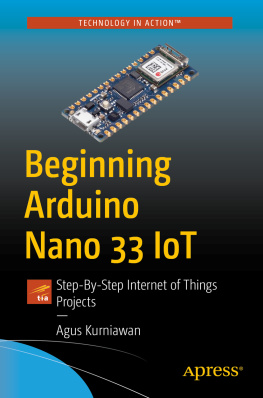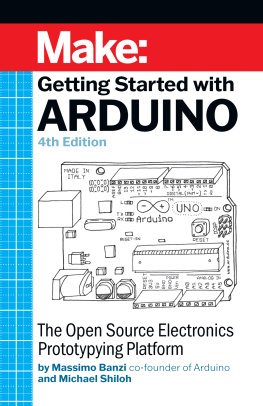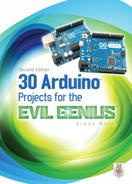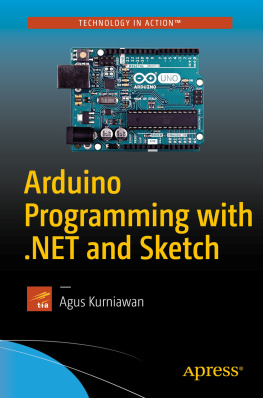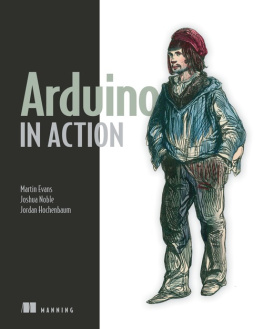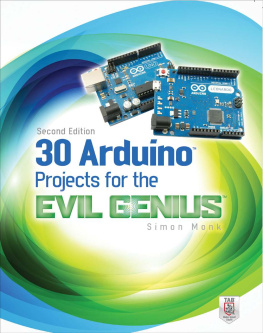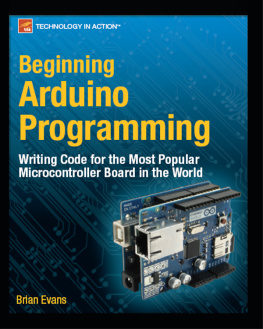Maik Schmidt - Arduino: A Quick-Start Guide, 2nd Edition
Here you can read online Maik Schmidt - Arduino: A Quick-Start Guide, 2nd Edition full text of the book (entire story) in english for free. Download pdf and epub, get meaning, cover and reviews about this ebook. year: 2015, publisher: The Pragmatic Bookshelf, genre: Home and family. Description of the work, (preface) as well as reviews are available. Best literature library LitArk.com created for fans of good reading and offers a wide selection of genres:
Romance novel
Science fiction
Adventure
Detective
Science
History
Home and family
Prose
Art
Politics
Computer
Non-fiction
Religion
Business
Children
Humor
Choose a favorite category and find really read worthwhile books. Enjoy immersion in the world of imagination, feel the emotions of the characters or learn something new for yourself, make an fascinating discovery.
- Book:Arduino: A Quick-Start Guide, 2nd Edition
- Author:
- Publisher:The Pragmatic Bookshelf
- Genre:
- Year:2015
- Rating:4 / 5
- Favourites:Add to favourites
- Your mark:
Arduino: A Quick-Start Guide, 2nd Edition: summary, description and annotation
We offer to read an annotation, description, summary or preface (depends on what the author of the book "Arduino: A Quick-Start Guide, 2nd Edition" wrote himself). If you haven't found the necessary information about the book — write in the comments, we will try to find it.
Arduino is an open-source platform that makes DIY electronics projects easier than ever. Gone are the days when you had to learn electronics theory and arcane programming languages before you could even get an LED to blink. Now, with this new edition of the bestselling Arduino: A Quick-Start Guide, readers with no electronics experience can create their first gadgets quickly. This book is up-to-date for the new Arduino Zero board, with step-by-step instructions for building a universal remote, a motion-sensing game controller, and many other fun, useful projects.
This Quick-Start Guide is packed with fun, useful devices to create, with step-by-step instructions and photos throughout. Youll learn how to connect your Arduino to the Internet and program both client and server applications. Youll build projects such as your own motion-sensing game controller with a three-axis accelerometer, create a universal remote with an Arduino and a few cheap parts, build your own burglar alarm that emails you whenever someones moving in your living room, build binary dice, and learn how to solder. In one of several new projects in this edition, youll create your own video game console that you can connect to your TV set.
This book is completely updated for the new Arduino Zero board and the latest advances in supporting software and tools for the Arduino. Sidebars throughout the book point you to exciting real-world projects using the Arduino, exercises extend your skills, and -What If It Doesnt Work- sections help you troubleshoot common problems.
With this book, beginners can quickly join the worldwide community of hobbyists and professionals who use the Arduino to prototype and develop fun, useful inventions.
What You Need:
This is the full list of all parts youd need for all projects in the book; some of these are provided as part of various kits that are available on the web, or you can purchase individually. Sources include adafruit.com, makershed.com, radioshack.com, sparkfun.com, and mouser.com. Please note we do not support or endorse any of these vendors, but we list them here as aconvenience for you.
Arduino Zero (or Uno or Duemilanove or Diecimila) board
USB cable
Half-size breadboard
Pack of LEDs (at least 3, 10 or more is a good idea)
Pack of 100 ohm, 10k ohm, and 1k ohm resistors
Four pushbuttons
Breadboard jumper wire / connector wire
Parallax Ping))) sensor
Passive Infrared sensor
An infrared LED
A 5V servo motor
Analog Devices TMP36 temperature sensor
ADXL335 accelerometer breakout board
6 pin 0.1- standard header (might be included with the ADXL335)
Nintendo Nunchuk Controller
Arduino Ethernet shield
Arduino Proto shield and a tiny breadboard (optional but recommended)
Piezo speaker/buzzer (optional)
Tilt sensor (optional)
A 25-30 Watts soldering iron with a tip (preferrably 1/16-)
A soldering stand and a sponge
A standard 60/40 solder (rosin-core) spool for electronics work
Maik Schmidt: author's other books
Who wrote Arduino: A Quick-Start Guide, 2nd Edition? Find out the surname, the name of the author of the book and a list of all author's works by series.




